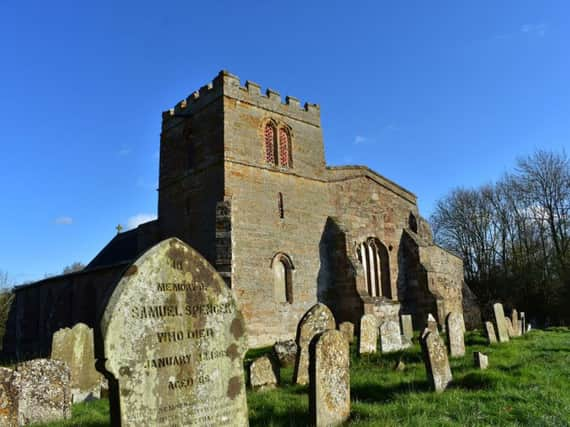The 'plague' church in Wolfhampcote needs your help


The Churches Conservation Trust, which maintains the Grade II-listed church, also plans to reglaze the windows – which are presently glazed with plastic as a result of repeated vandalism in the past.
Described as “the church that refused to die”, St Peter’s church at Wolfhampcote was made famous after Facebook users across Warwickshire found their posts being tagged as coming from the abandoned village.
Advertisement
Hide AdAdvertisement
Hide AdThe church remains consecrated and is still used for services as well as other events.


Although Wolfhampcote is rumoured to have been deserted during a plague outbreak, historians believe it was abandoned around 1500 when the land was converted to sheep farming.
A 1955 archaeological investigation on the site showed the village had been occupied since the Saxon period, though it was mostly inhabited in the 12th and 13th centuries.
By 1517, a government inquiry described Wolfhampcote as being in complete ruin after 70 acres of land were enclosed for sheep farming, causing 12 residents to have to leave.
Advertisement
Hide AdAdvertisement
Hide AdEarthworks of the former village are still visible in the field north of the church.


Although it had no village to serve after the early 1500s, the church survived as owners of the estate continued to maintain the building.
The Domesday Book of 1086 mentioned a priest at Wolfhampcote but the Norman font (pictured) is the only surviving part of the church from that era.
The earliest stonework in the present building is believed to be the lower part of the tower - which dates from the 13th century.
Advertisement
Hide AdAdvertisement
Hide AdThe nave (the central part of the building) was completed in the 14th century, with the clerestory (the part of the wall in which windows are set) dating back to the 15th century.


The church suffered from persistent vandalism in the past, resulting in the destruction of historic box pews and the guardians of the building being forced to glaze the windows with translucent plastic.
Despite this ten of the 14th or 15th century oak benches, the ancient parish chest and the bier (a moveable frame used to carry a coffin) have survived.
One of the benches has a carved end with two partially completed rosettes (pictured) at the head.
Advertisement
Hide AdAdvertisement
Hide AdRegular voluntary activities include managing events, conservation care and administration, although many volunteers offer other support – giving talks, reviewing the building’s fabric or organising cleaning parties.


Volunteers are supported, even if they are not sure what they might want to do.
To learn more about volunteering, email [email protected] with your phone number and details of the best times to be in touch.
For more on Wolfhampcote, visit wolfhamcote-church.org.uk or www.visitchurches.org.uk/visit/church-listing/st-peter-wolfhamcote.html